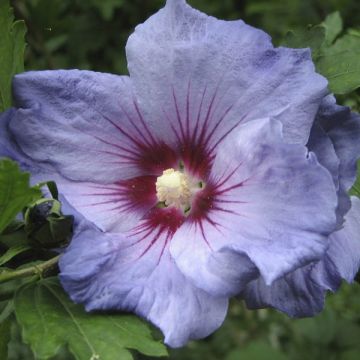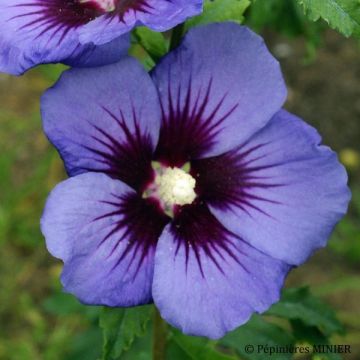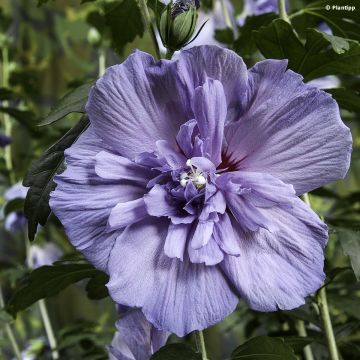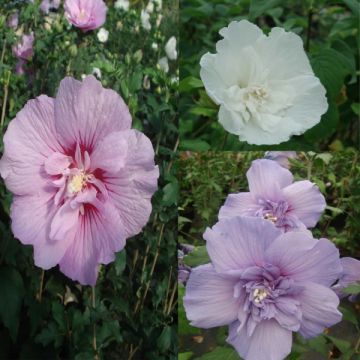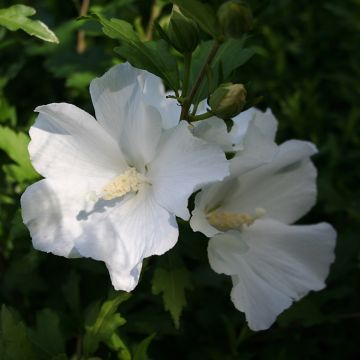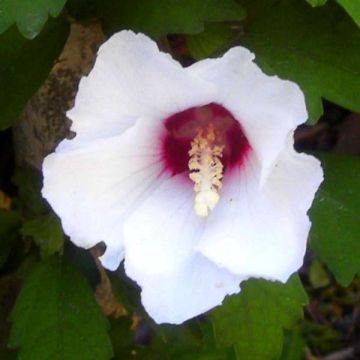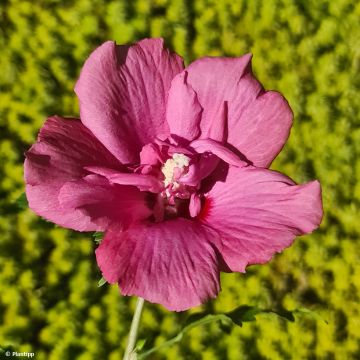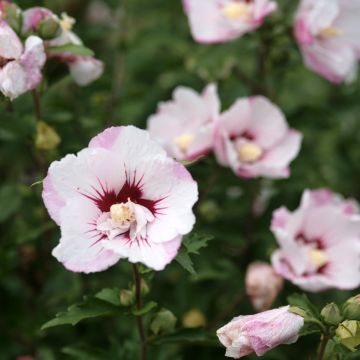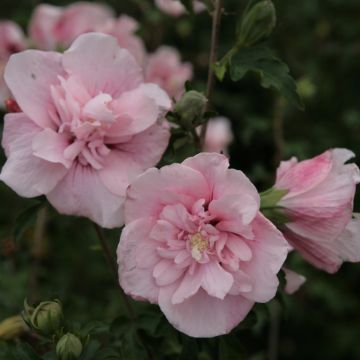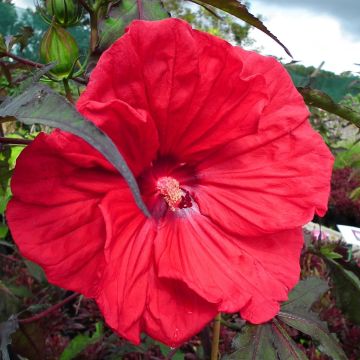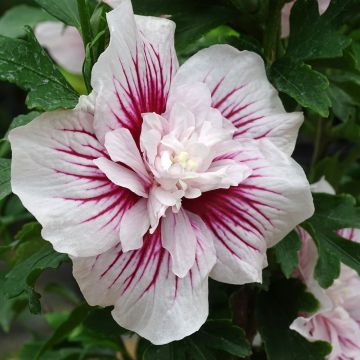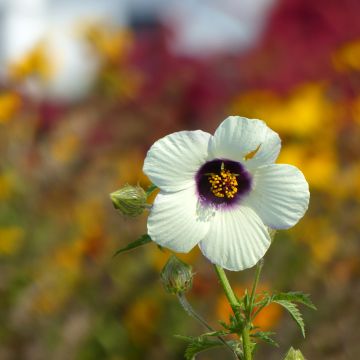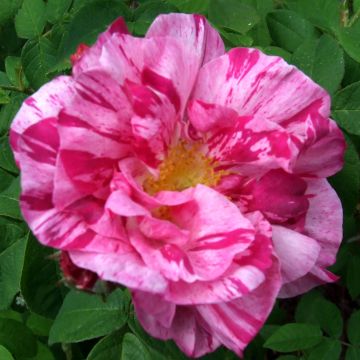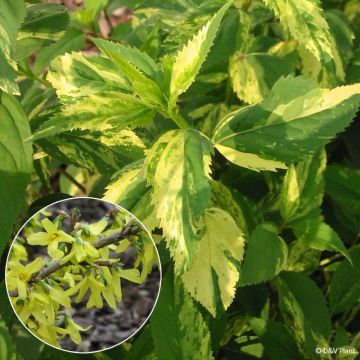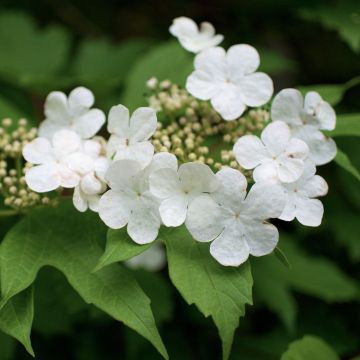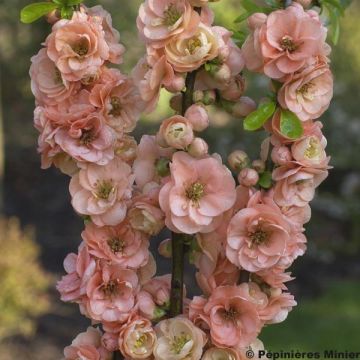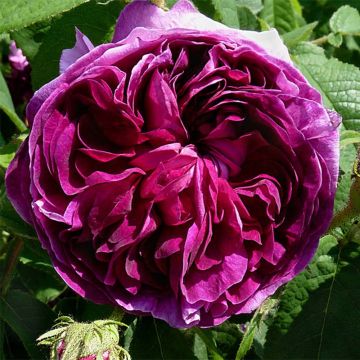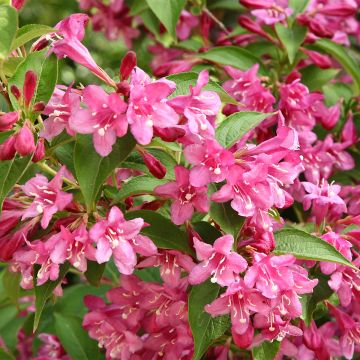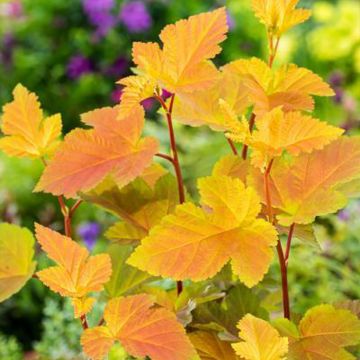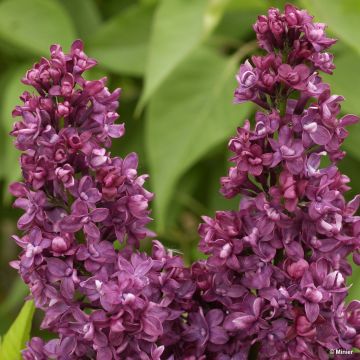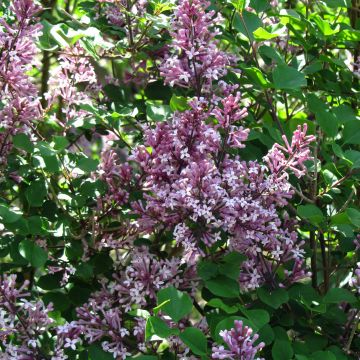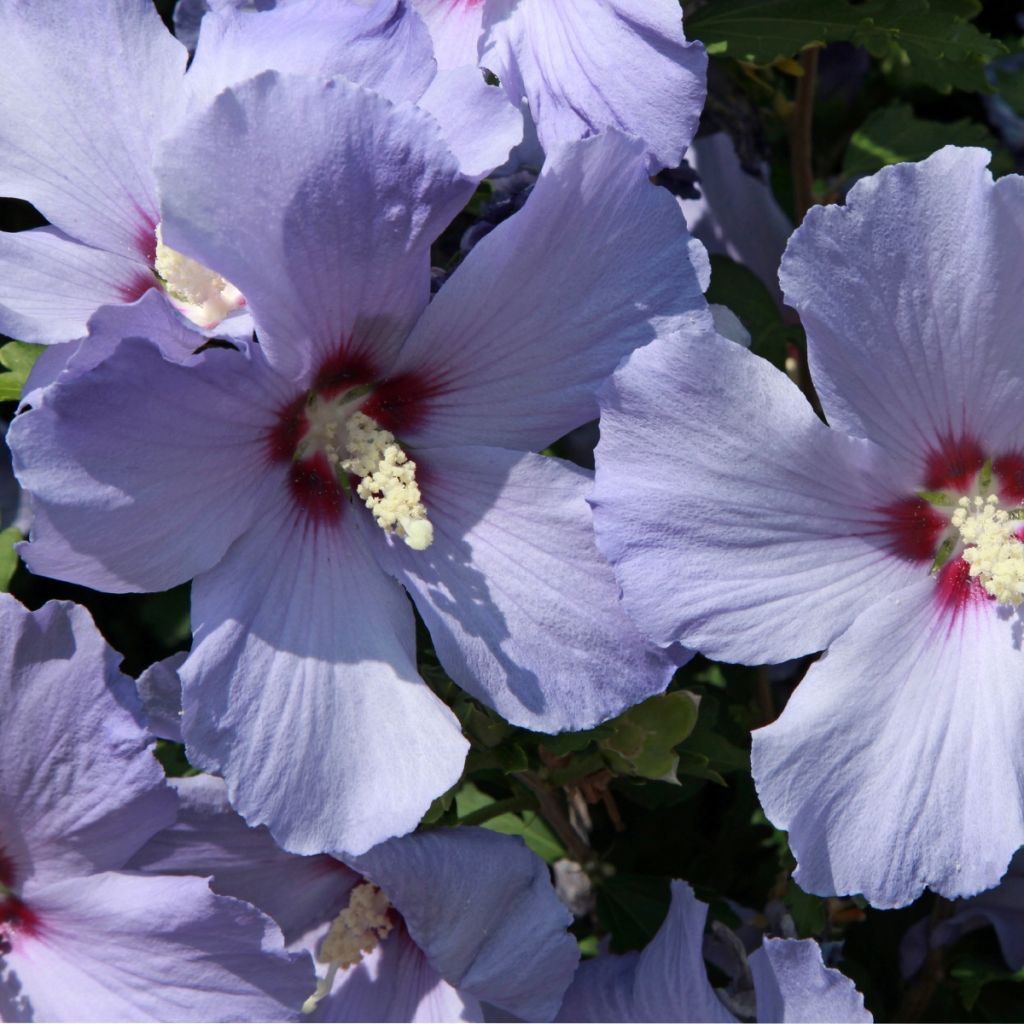

Hibiscus syriacus AZURRI - Rose of Sharon
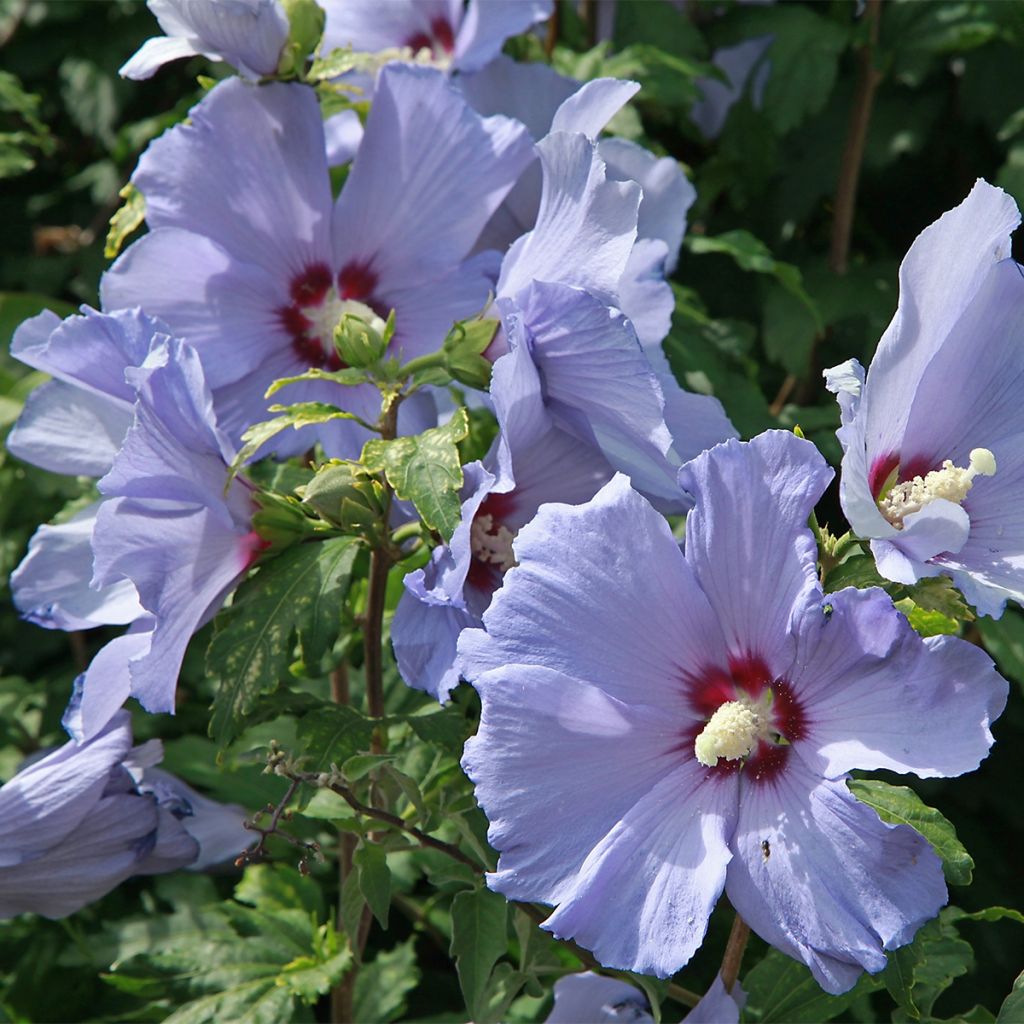

Hibiscus syriacus AZURRI - Rose of Sharon
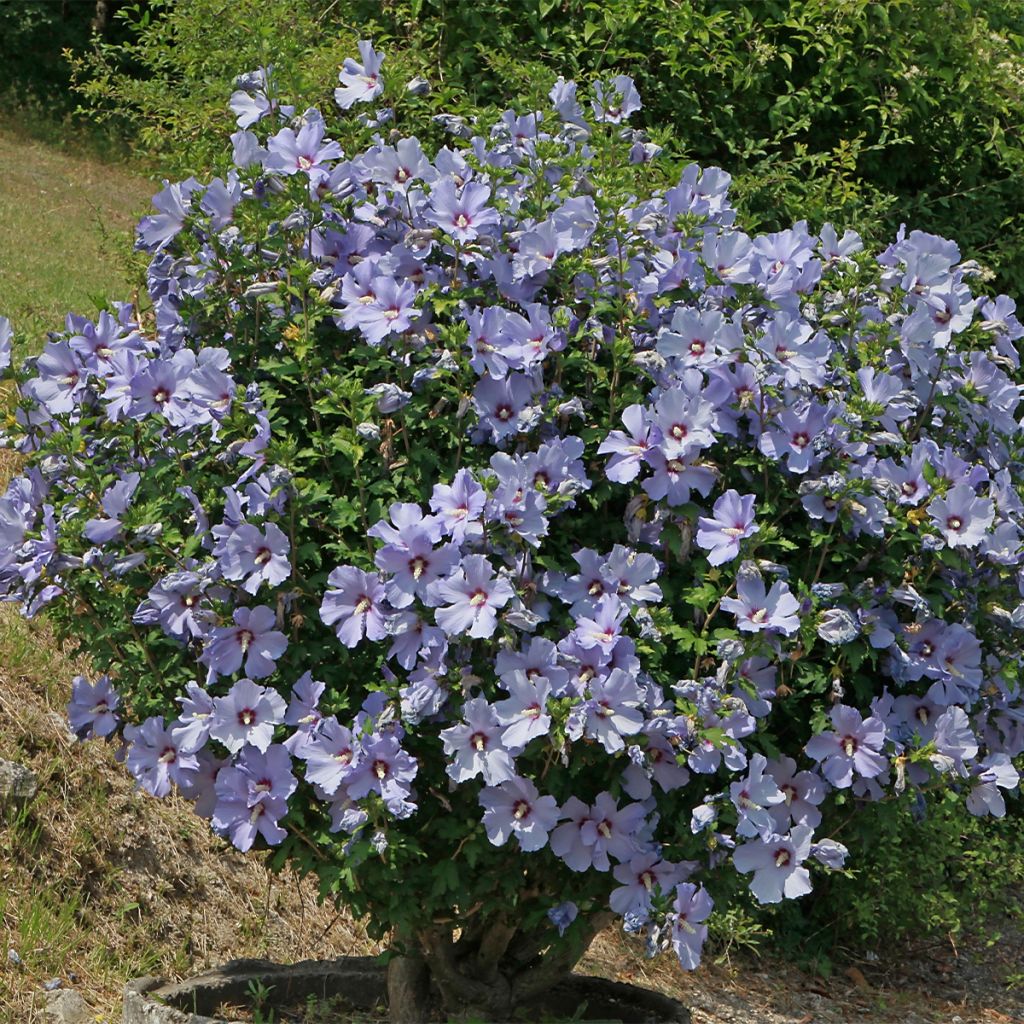

Hibiscus syriacus AZURRI - Rose of Sharon
Hibiscus syriacus AZURRI - Rose of Sharon
Hibiscus syriacus AZURRI® PBR
Common Hibiscus, Rose of Sharon, Syrian ketmia, St Joseph's rod, Garden Hibiscus
Unfortunately, I received a teeny tiny young plant, measuring at most 20 cm (8in), with a branch... it's difficult to give a favorable opinion. Furthermore, after my complaint, they only offered me a half refund...! I asked for a plant that matched the description, but they informed me that it wasn't possible because all the specimens were too small...! So now I'm stuck with a plant that's way too small to put where I had planned for planting, and I'll have to find a suitable hibiscus elsewhere. It's a shame for a first order, a bad impression. Luckily, the other two specimens I ordered (a flowering currant and a potentilla) match the description.
Sophie, 18/10/2022
Why not try an alternative variety in stock?
View all →This plant carries a 24 months recovery warranty
More information
We guarantee the quality of our plants for a full growing cycle, and will replace at our expense any plant that fails to recover under normal climatic and planting conditions.
From €5.90 for pickup delivery and €6.90 for home delivery
Express home delivery from €8.90.
From €5.90 for pickup delivery and €6.90 for home delivery
Express home delivery from €8.90.
Delivery to Corse prohibited: UE law prohibits the import of this plant from mainland France to Corse as part of the fight against Xylella fastidiosa. Please accept our sincere apologies.
More information
Does this plant fit my garden?
Set up your Plantfit profile →
Description
Hibiscus syriacus Azuri is a relatively recent variety of bushy Mallow tree that forms a well-branched bush of medium size, with beautiful blue flowers with a red heart. This generous bush is in bloom from July to September, and it tolerates winter perfectly despite its exotic appearance. It deserves a prominent place near the house, isolated in the centre of a perennial bed, or within a varied hedge. The Hibiscus syriacus is easily grown in non-scorching sunlight or partial shade in warm climates, in slightly moist soil and even limestone, under all climates.
The Hibiscus syriacus, sometimes called Garden Hibiscus, is a hardy bush, deciduous in most climates and evergreen in warm climates, belonging to the Malvaceae family, just like hollyhocks and marshmallows. The Hibiscus genus includes tropical shrubs and small trees, such as the well-known Hibiscus rosa-sinensis or the rarer H. schizopetalus with lace-like flowers, perennial plants like H. moscheutos, whose flowers can reach 25cm (9.8in) in diameter, and H. syriacus, a hardy bush that can grow further north. It is native to temperate regions of Asia and has given rise to numerous cultivars, including this superb Azuri variety.
Azuri is part of a complete range (Rosso, Bianco, Cielo, Pastello) selected for its floribundity and ease of cultivation. This variety is the result of a crossbreeding between the famous 'Oiseau Bleu' variety and an unnamed variety, carried out by the Belgian Johan Van Huylenbroeck. This researcher from ILVO (a Flemish agricultural research institute) selected this novelty in 2003, before entrusting its propagation to a cooperative of Belgian nurserymen. Azurii was then granted a protective patent in the United States at the end of 2009. This variety has great ornamental interest: it is the first sterile blue-flowered Hibiscus. This characteristic allows it to continue flowering and growing all summer without unnecessary energy going into fruit production. It is a relatively compact, well-branched bush, but can exceed 2m (6 in 7ft) in height if not pruned, with a spread of 1.50 m (4.92 ft). The smooth, green leaves are simple and alternate, measuring about 9.5cm (3.7in) long by 5.5cm (2.2in) wide and lobed. From July to late September, it produces large single flowers, about 11cm (4.3in) in diameter, forming a wide open cup about 6cm (2.4in) deep, with petals imbricated at the base, a beautiful blue colour enhanced by a red heart. This bush is easy to grow, tolerating most soils, especially limestone, provided they are sufficiently deep.
Althaea 'Azurii' likes bright, warm exposures, and can tolerate light shade in southern regions. Plant it in soil that remains slightly moist until the end of summer to support flowering. This truly charming bush is not delicate or difficult: it can be grown in all regions, especially in small gardens. To create a colourful summer scene, associate it with other shrubs that bloom at the same time. The Lavateras, also members of the Malvaceae family, will accompany Azuri's flowering throughout the summer. Choose a variety with white flowers, unless you want to create a strong contrast by opting for pink. But perhaps you prefer to focus on other flower shapes, in which case the splendid Indian Lilacs (Lagerstroemias) will delight you with their vibrant coloured clusters. Also spectacular is the amazing Buddleia davidii Reve de Papillon White with its huge white panicles measuring 20 to 30cm (7.9 to 11.8in) long, or try Hydrangea paniculata Hercules with white-green inflorescences that can reach 35cm (13.8in).
Report an error about the product description
Hibiscus syriacus AZURRI - Rose of Sharon in pictures
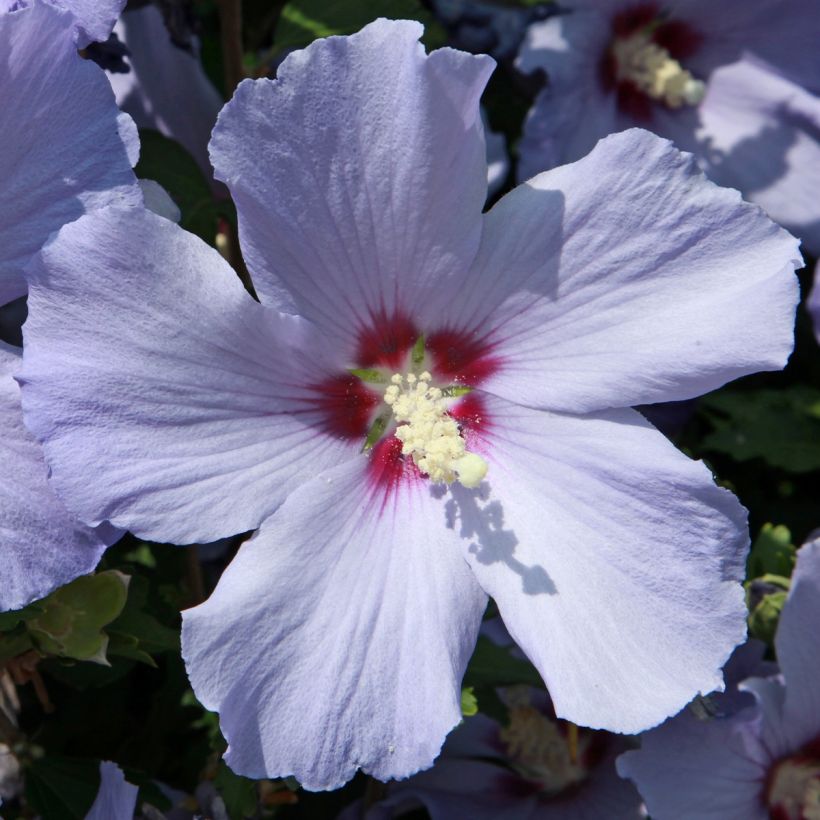

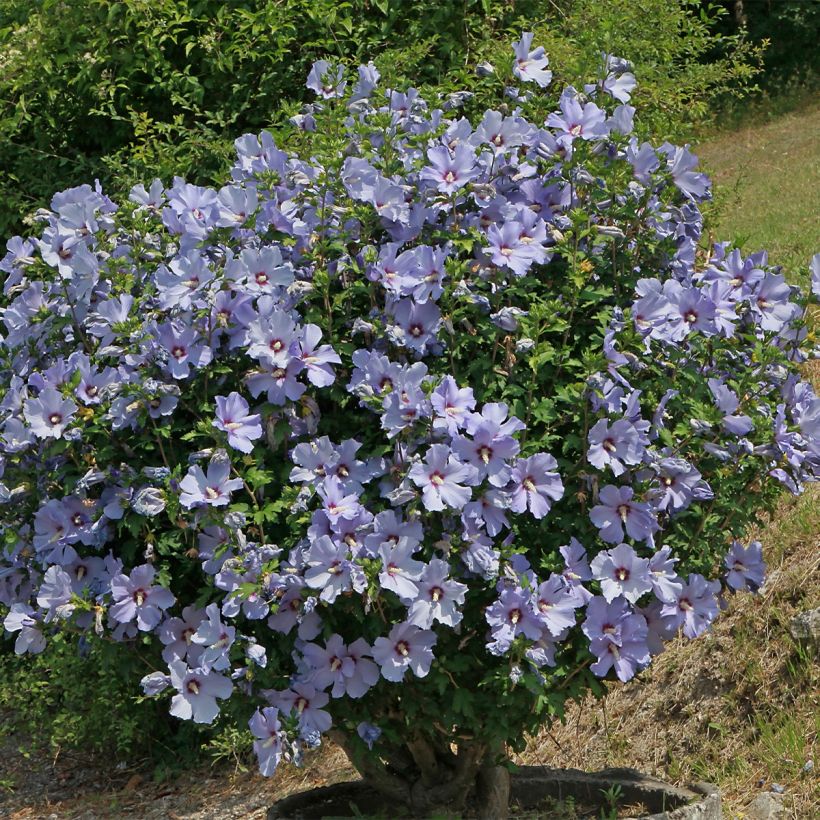

Plant habit
Flowering
Foliage
Botanical data
Hibiscus
syriacus
AZURRI® PBR
Malvaceae
Common Hibiscus, Rose of Sharon, Syrian ketmia, St Joseph's rod, Garden Hibiscus
Cultivar or hybrid
Other Hibiscus
Planting and care
Plant Hibiscus syriacus 'Azurri' in spring or autumn, in a sunny position, or partial shade in southern regions, in well-drained, loose, fertile soil. Make a deep planting hole, add some compost and sand to your garden soil to improve soil quality if necessary. Water abundantly after planting. Don't worry if the leaves don't appear before May, it's perfectly normal for this bush.
While altheas can tolerate heat and occasionally dry soils, they are more beautiful and floriferous in soil that doesn't dry out too much in summer. Mulch the base if needed, to maintain moisture above the roots.
Planting period
Intended location
Care
-
, onOrder confirmed
Reply from on Promesse de fleurs
Foolproof Shrubs
Haven't found what you were looking for?
Hardiness is the lowest winter temperature a plant can endure without suffering serious damage or even dying. However, hardiness is affected by location (a sheltered area, such as a patio), protection (winter cover) and soil type (hardiness is improved by well-drained soil).

Photo Sharing Terms & Conditions
In order to encourage gardeners to interact and share their experiences, Promesse de fleurs offers various media enabling content to be uploaded onto its Site - in particular via the ‘Photo sharing’ module.
The User agrees to refrain from:
- Posting any content that is illegal, prejudicial, insulting, racist, inciteful to hatred, revisionist, contrary to public decency, that infringes on privacy or on the privacy rights of third parties, in particular the publicity rights of persons and goods, intellectual property rights, or the right to privacy.
- Submitting content on behalf of a third party;
- Impersonate the identity of a third party and/or publish any personal information about a third party;
In general, the User undertakes to refrain from any unethical behaviour.
All Content (in particular text, comments, files, images, photos, videos, creative works, etc.), which may be subject to property or intellectual property rights, image or other private rights, shall remain the property of the User, subject to the limited rights granted by the terms of the licence granted by Promesse de fleurs as stated below. Users are at liberty to publish or not to publish such Content on the Site, notably via the ‘Photo Sharing’ facility, and accept that this Content shall be made public and freely accessible, notably on the Internet.
Users further acknowledge, undertake to have ,and guarantee that they hold all necessary rights and permissions to publish such material on the Site, in particular with regard to the legislation in force pertaining to any privacy, property, intellectual property, image, or contractual rights, or rights of any other nature. By publishing such Content on the Site, Users acknowledge accepting full liability as publishers of the Content within the meaning of the law, and grant Promesse de fleurs, free of charge, an inclusive, worldwide licence for the said Content for the entire duration of its publication, including all reproduction, representation, up/downloading, displaying, performing, transmission, and storage rights.
Users also grant permission for their name to be linked to the Content and accept that this link may not always be made available.
By engaging in posting material, Users consent to their Content becoming automatically accessible on the Internet, in particular on other sites and/or blogs and/or web pages of the Promesse de fleurs site, including in particular social pages and the Promesse de fleurs catalogue.
Users may secure the removal of entrusted content free of charge by issuing a simple request via our contact form.
The flowering period indicated on our website applies to countries and regions located in USDA zone 8 (France, the United Kingdom, Ireland, the Netherlands, etc.)
It will vary according to where you live:
- In zones 9 to 10 (Italy, Spain, Greece, etc.), flowering will occur about 2 to 4 weeks earlier.
- In zones 6 to 7 (Germany, Poland, Slovenia, and lower mountainous regions), flowering will be delayed by 2 to 3 weeks.
- In zone 5 (Central Europe, Scandinavia), blooming will be delayed by 3 to 5 weeks.
In temperate climates, pruning of spring-flowering shrubs (forsythia, spireas, etc.) should be done just after flowering.
Pruning of summer-flowering shrubs (Indian Lilac, Perovskia, etc.) can be done in winter or spring.
In cold regions as well as with frost-sensitive plants, avoid pruning too early when severe frosts may still occur.
The planting period indicated on our website applies to countries and regions located in USDA zone 8 (France, United Kingdom, Ireland, Netherlands).
It will vary according to where you live:
- In Mediterranean zones (Marseille, Madrid, Milan, etc.), autumn and winter are the best planting periods.
- In continental zones (Strasbourg, Munich, Vienna, etc.), delay planting by 2 to 3 weeks in spring and bring it forward by 2 to 4 weeks in autumn.
- In mountainous regions (the Alps, Pyrenees, Carpathians, etc.), it is best to plant in late spring (May-June) or late summer (August-September).
The harvesting period indicated on our website applies to countries and regions in USDA zone 8 (France, England, Ireland, the Netherlands).
In colder areas (Scandinavia, Poland, Austria...) fruit and vegetable harvests are likely to be delayed by 3-4 weeks.
In warmer areas (Italy, Spain, Greece, etc.), harvesting will probably take place earlier, depending on weather conditions.
The sowing periods indicated on our website apply to countries and regions within USDA Zone 8 (France, UK, Ireland, Netherlands).
In colder areas (Scandinavia, Poland, Austria...), delay any outdoor sowing by 3-4 weeks, or sow under glass.
In warmer climes (Italy, Spain, Greece, etc.), bring outdoor sowing forward by a few weeks.

































